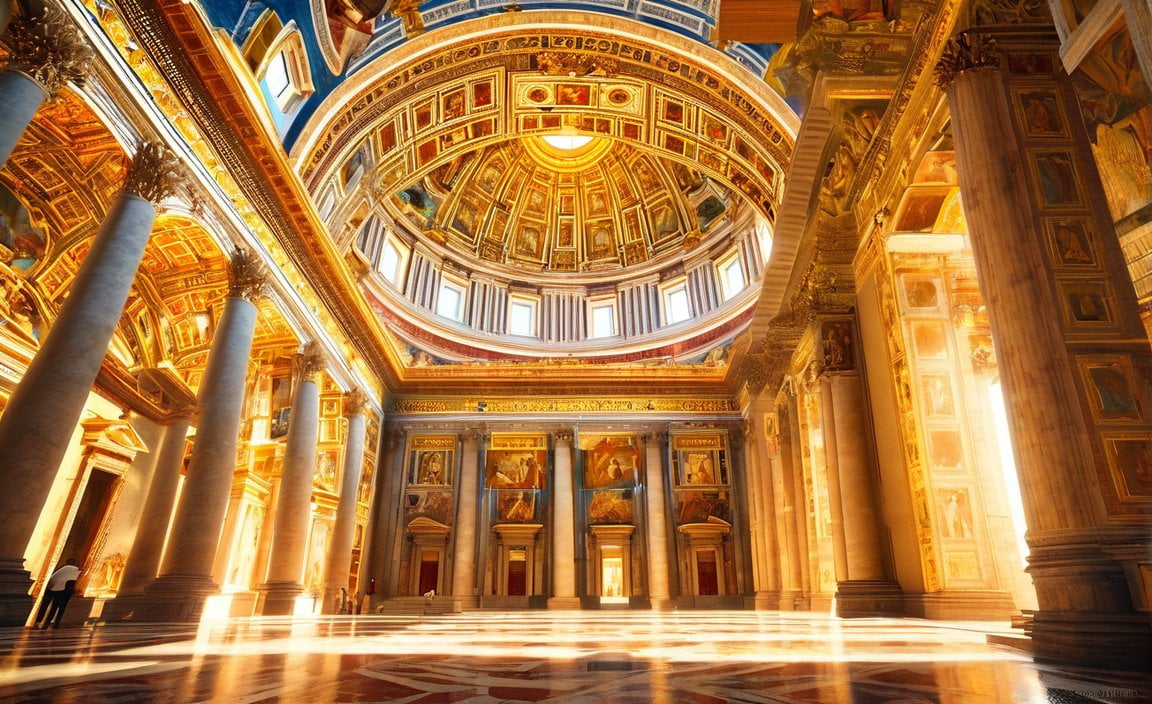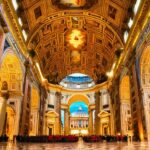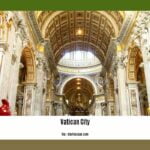Discover Fascinating Facts about Vatican City: An Insider’s Guide invites you to delve into the hidden secrets and captivating history of this extraordinary sovereign territory. As you journey through the enchanting world of Vatican City, you’ll be immersed in a treasure trove of intriguing facts that offer a unique glimpse into its rich cultural heritage. From unravelling the mysteries of the world-famous Sistine Chapel to exploring the Vatican Museums’ remarkable collection, this article will take you on an unforgettable tour of one of the world’s most captivating destinations.
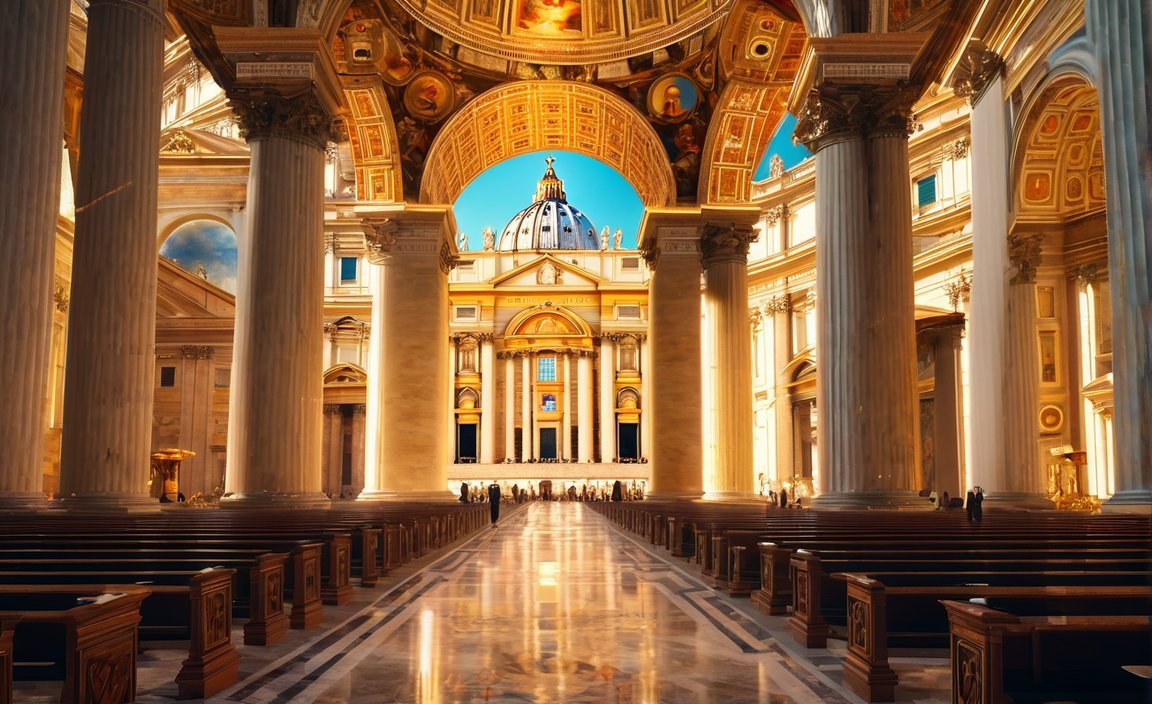
Key Takeaways:
- Vatican City is a sovereign city-state located within Rome, Italy.
- It is the smallest state in the world by both area and population, occupying 49 hectares (121 acres) and having around 800-900 people.
- The city-state serves as the seat of the Roman Catholic Church and has no capital as the city itself is the state.
- The official language of Vatican City is Italian and its official currency is the Euro (€).
- Vatican City has only one bordering country, which is Italy.
Facts about Vatican City
Introduction
Vatican City, nestled within Rome, Italy, is a sovereign city-state that holds immense historical and cultural significance. A mecca for the Roman Catholic Church, this enchanting destination is steeped in centuries of intriguing history. In this article, we will delve into the fascinating facts about Vatican City, providing you with an insider’s guide to this captivating territory.
The Smallest State in the World
Vatican City holds the remarkable distinction of being the smallest state in the world, both in terms of area and population. Spanning a mere 49 hectares (121 acres), this petite city-state is home to approximately 800-900 residents. Its compact size, however, belies the immense influence it holds on the global stage.
The Seat of the Roman Catholic Church
Vatican City serves as the spiritual and administrative center of the Roman Catholic Church. This sacred territory is where the Pope, the spiritual leader of over one billion Catholics worldwide, resides and carries out his duties. As such, Vatican City holds a truly unique and revered position within the Catholic faith, attracting millions of pilgrims and visitors each year.
A State within a City
One intriguing fact about Vatican City is that it has no capital because the city itself is the state. The entire territory functions as a cohesive unit, with various buildings and structures serving specific administrative, religious, and cultural purposes. From the majestic St. Peter’s Basilica to the awe-inspiring Sistine Chapel, every corner of Vatican City is brimming with historical significance and architectural brilliance.
Language and Currency
Italian is the official language of Vatican City, reflecting its proximity to and historical connection with Italy. As for currency, the Euro (€) is the widely accepted form of payment in this unique sovereign territory. Whether you are exploring its magnificent museums or seeking solace in its tranquil gardens, Vatican City offers a seamless blend of Italian culture and global spiritual magnificence.
Bordering Country
Despite its distinct status as a sovereign city-state, Vatican City shares its borders with only one country: Italy. Nestled within the boundaries of Rome, Vatican City’s seamless integration into the Italian landscape further emphasizes its rich historical background and cultural significance.
Unearthing the Secrets of Vatican City
Vatican City, with its pint-sized dimensions, hosts a treasure trove of captivating secrets and wonders waiting to be discovered. From its extensive art collections to its meticulously preserved historical artifacts, every nook and cranny of this tiny state offers a glimpse into the grandeur and splendor of the Roman Catholic Church’s storied past.
As you embark on your journey through Vatican City, prepare to be enthralled by the intricate details and immersive experiences that await you. Whether you are a devout Catholic or simply a seeker of historical and cultural exploration, Vatican City promises to leave an indelible mark on your soul.
Conclusion
In summary, Vatican City stands as a testament to the enduring spiritual and cultural legacy of the Roman Catholic Church. Its unique status as the smallest state in the world, combined with its rich history and enchanting landmarks, beckons travelers from far and wide. With each step you take within its hallowed ground, you are sure to uncover a wealth of fascinating facts and immersive experiences that will deepen your understanding and appreciation of Vatican City’s enduring legacy. So, lace up your shoes, open your mind, and prepare to be captivated by the wonders that await you within the enchanting borders of Vatican City.
Here are some interesting links for you to explore:
- Fun facts on silver: Discover fascinating and surprising information about silver.
- Interesting facts about Antarctica: Explore the mysterious and captivating world of Antarctica with these intriguing facts.
- Fun facts about Serbia: Dive into the rich culture and history of Serbia through these fun and engaging facts.
- Fascinating facts of India: Uncover the wonders and complexities of India with these captivating facts.
- Facts on Albania: Delve into the lesser-known aspects of Albania with these eye-opening facts.
Take a moment to click on these links and expand your knowledge!
The Vatican as an Independent Sovereign Entity
The Vatican City, a captivating destination nestled within the heart of Rome, holds a unique status as an independent sovereign entity. This tiny nation-state, covering a mere 109 acres, is renowned as the spiritual and administrative headquarters of the Roman Catholic Church, with the Pope calling it home. But beyond its religious significance, Vatican City stands apart as a fully recognized independent country with its own government, laws, and international relations. Let’s delve into some fascinating facts about the Vatican as an independent sovereign entity.
Vatican City: A Nation within Walls
Established as a sovereign state in 1929 with the signing of the Lateran Pacts, the Vatican City is the world’s smallest independent nation-state. Within its two-mile border, Vatican City encompasses not just the iconic St. Peter’s Basilica and the awe-inspiring Sistine Chapel but also other significant buildings serving various purposes. From the Apostolic Palace, where the Pope resides, to the Vatican Museums, this enclave of history and faith showcases an extraordinary blend of art, architecture, and spirituality.
International Recognition
Despite its limited size, Vatican City possesses internationally recognized boundaries and interacts with other nations in its own capacity. Although it is not a member of the United Nations, the Vatican holds observer status, demonstrating its role as a respected entity on the global stage. This unique sovereign territory has established diplomatic relations with numerous countries, including the presence of embassies, creating a network of international engagement and influence.
Distinct Legal and Political System
As an independent nation-state, the Vatican City operates under its own legal and political system. It maintains its judiciary, legislative, and executive branches, ensuring the governance and administration of its affairs. The Pope, as the head of state, exercises executive power, supported by the Roman Curia. This intricate system empowers the Vatican to function autonomously while preserving its connection to the Roman Catholic Church.
A Pilgrim’s Haven
While Vatican City welcomes millions of pilgrims and visitors each year, it is essential to remember that it is not just a tourist destination. It holds a sacred place in the hearts of over 1.2 billion followers of the Catholic Church worldwide. As you stand beneath the magnificent dome of St. Peter’s Basilica or gaze at the divine frescoes in the Sistine Chapel, you are immersing yourself in the spiritual center of a global community. This shared reverence and devotion make Vatican City a place of profound significance for countless individuals.
Key Takeaways:
- The Vatican City is the world’s smallest independent nation-state, occupying a mere 109 acres within Rome.
- With internationally recognized boundaries, Vatican City holds observer status at the United Nations and maintains diplomatic relations with various countries.
- The Vatican operates under its own legal and political system, led by the Pope and supported by the Roman Curia.
- While it welcomes visitors, Vatican City’s primary purpose is as a spiritual center for over 1.2 billion followers of the Catholic Church.
- Exploring the Vatican offers an awe-inspiring glimpse into the intersection of faith, art, and history.
Sources:
– Vatican City – HISTORY
– Vatican City – Wikipedia
Key Landmarks and Attractions in Vatican City
Vatican City, the smallest independent state in the world, is home to a myriad of key landmarks and attractions that offer a fascinating glimpse into its rich history and cultural heritage. From magnificent churches to awe-inspiring artworks, here are some must-visit sites in Vatican City:
St. Peter’s Basilica
St. Peter’s Basilica, the largest church in the world, stands as a testament to the brilliance of Renaissance architecture. This majestic masterpiece is not only the burial site of many popes but also houses significant works of art, including the renowned Pietà by Michelangelo. As you step inside, you’ll be captivated by the grandeur and beauty that surrounds you.
St. Peter’s Square
Located in front of St. Peter’s Basilica, St. Peter’s Square is an iconic plaza that has witnessed numerous papal addresses throughout its history. Encircled by majestic colonnades and adorned with an Egyptian obelisk at its center, this square exudes a sense of grandiosity and serves as a gathering place for religious events and ceremonies.
Cupola di San Pietro
Climbing to the top of the Cupola di San Pietro, the dome of St. Peter’s Basilica, offers an extraordinary experience with breathtaking panoramic views of Vatican City and Rome. As you ascend, you’ll be rewarded with a unique perspective that reveals the grandeur of the city and its surroundings.
Vatican Necropolis
The Vatican Necropolis is an underground cemetery that holds great significance for Catholics and history enthusiasts. It houses the tomb of St. Peter, considered one of the founding figures of the Christian faith. A visit to this sacred site provides a profound connection to the early Christian history and offers a deeply spiritual experience.
Tomba di Giovanni Paolo II
Situated within St. Peter’s Basilica, the tomb of Pope John Paul II is a place of remembrance and reverence. It provides an opportunity to pay homage to one of the most influential popes in recent history and reflects the deep devotion of Catholics worldwide.
Vatican Museums
The Vatican Museums are a treasure trove of art and historical artifacts that trace the rich cultural heritage of the Catholic Church. This vast collection showcases masterpieces from various periods, encompassing sculptures, paintings, tapestries, and more. Among the highlights is the world-renowned Sistine Chapel, which houses Michelangelo’s iconic ceiling painting and serves as a venue for the papal conclave, where the pope is elected.
By exploring these key landmarks and attractions, visitors to Vatican City are granted an immersive experience that unveils the city-state’s remarkable artistic, historical, and religious legacy.
Key Takeaways:
– St. Peter’s Basilica, the largest church in the world, is a must-visit site that showcases magnificent Renaissance architecture and holds significant works of art.
– St. Peter’s Square is an iconic plaza where the pope addresses the crowds, surrounded by colonnades and featuring an Egyptian obelisk at its center.
– Climbing the Cupola di San Pietro offers breathtaking panoramic views of Vatican City and Rome.
– The Vatican Necropolis, an underground cemetery, houses the tomb of St. Peter and provides a glimpse into early Christian history.
– The tomb of Pope John Paul II, located within St. Peter’s Basilica, is a place of reverence and remembrance.
– The Vatican Museums boast a remarkable collection of art and historical artifacts, including the famous Sistine Chapel with Michelangelo’s awe-inspiring frescoes.
Sources:
1. Tripadvisor: THE 10 BEST Vatican City Sights & Landmarks
2. Earth Trekkers: How to Visit the Vatican Museums & St. Peter’s Basilica
The Role of the Pope and the Vatican in Christianity
The Vatican City, the smallest independent nation-state in the world, holds significant historical and religious importance as the seat of the Roman Catholic Church. It is home to the Pope, the Bishop of Rome and the spiritual leader for over 1.2 billion Catholics worldwide. In this article, we will explore the fascinating role of the Pope and the Vatican in Christianity, shedding light on their impact and influence on the faith.
1. The Papacy and the Pope
The term “papacy” refers to the office and authority of the Pope. The Pope is not only the religious leader of the Roman Catholic Church but also the Bishop of Rome. He serves as a unifying figure for millions of Catholics around the globe, providing spiritual guidance and representing the Church in matters of faith and doctrine. The Pope’s decisions and teachings shape the beliefs and practices of the Catholic faith.
2. Vatican City: The Spiritual Center
Vatican City acts as the spiritual center for millions of Catholic followers. It functions as an ecclesiastical state within the city of Rome, with the Pope as its head of state. The Vatican’s political status as an independent state grants it the freedom to govern its affairs and maintain diplomatic relations with other nations. This unique position allows the Vatican to exert influence and promote the teachings of the Catholic Church on a global scale.
3. Influence on Christianity
The Vatican’s role in Christianity goes far beyond its administrative and political functions. Through its religious doctrine and leadership, the Vatican has played a pivotal role in shaping the course of Christianity. The Pope’s teachings and decisions have a profound impact on the faith and practices of millions of Catholics. As the head of the Roman Catholic Church, the Pope carries the authority to interpret scripture, guide moral teachings, and provide direction for the faithful.
4. Guardians of Tradition and Faith
The Vatican serves as the custodian of Catholic tradition and faith. It preserves and safeguards the teachings, rituals, and sacraments that have been passed down throughout centuries. Through its various institutions, such as the Vatican Museums and St. Peter’s Basilica, the Vatican offers a glimpse into the rich history and cultural heritage of the Catholic Church. These sites attract millions of tourists each year, allowing them to witness firsthand the grandeur and significance of the Vatican’s religious and artistic treasures.
5. Symbol of Unity and Authority
The Vatican and the Pope are not only symbols of religious authority but also sources of unity for Catholics worldwide. The Pope’s role as the spiritual leader unifies believers and provides a central figure to whom they can turn for guidance and support. The Vatican’s status as the seat of the Roman Catholic Church reinforces this sense of unity and provides a focal point for the faith.
Key Takeaways:
- The Pope is the spiritual leader and the authority of the Roman Catholic Church, known as the papacy.
- Vatican City serves as the spiritual center for over 1.2 billion Catholics worldwide.
- The Vatican plays a pivotal role in shaping the course of Christianity through its religious doctrine and leadership.
- The Vatican preserves and protects Catholic tradition and faith, housing significant cultural and artistic treasures.
- The Pope and the Vatican symbolize unity and act as unifying forces for Catholics around the globe.
Citations:
– History: 10 Things You May Not Know About the Vatican
– Britannica: Pope | Definition, Title, List of Popes, & Facts
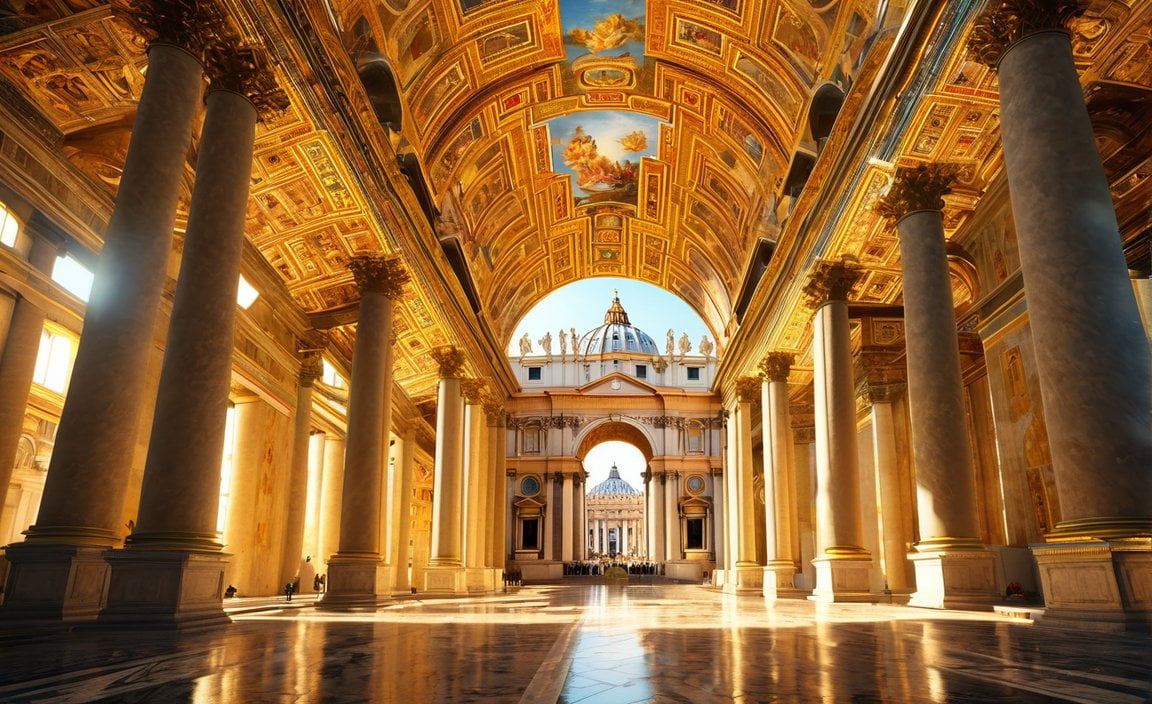
FAQ
Q1: How big is Vatican City?
A1: Vatican City is the smallest state in the world, occupying only 49 hectares (121 acres) in area.
Q2: What is the population of Vatican City?
A2: Vatican City has a population of around 800-900 people.
Q3: What is the official language of Vatican City?
A3: The official language of Vatican City is Italian.
Q4: What is the currency used in Vatican City?
A4: The official currency of Vatican City is the Euro (€).
Q5: Which country borders Vatican City?
A5: Vatican City shares its border with only one country, which is Italy.
- Unveiling the Enigma: Mansoureh Khojasteh Bagherzadeh’s Public Appearances & Private Life in Iran - July 18, 2025
- Unveiling the Mystery: Mansoureh Khojasteh Bagherzadeh’s Husband: A Rare Glimpse into a Private Life - July 18, 2025
- Unveiling Masoud Khamenei’s Mother: Power, Influence, and Iran’s Future - July 18, 2025
